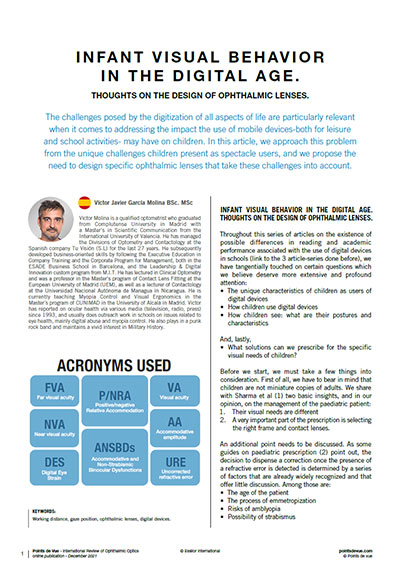
Vision a collaboration between eyes and brain
 Vision is neither present in the eyes nor in the brain, but results from the collaboration between the eyes and the rest of the brain. Vision is an omnipresent aspect of our existence, permeating all our activities.
Vision is neither present in the eyes nor in the brain, but results from the collaboration between the eyes and the rest of the brain. Vision is an omnipresent aspect of our existence, permeating all our activities.
It develops through neural plasticity and can be improved. Optometry is the discipline dedicated to the management of all aspects of the visual process.

Conference in Berne at the SSOO 2025 Congress
Case presentation at the SSOO 2025 Congress on “Removing diplopia in an 11-year-old child”, at the Zentrum Paul Klee in Berne.

The challenges posed by the digitization of all aspects of life are particularly relevant when it comes to addressing the impact the use of mobile devices-both for leisure and school activities- may have on children. In this article, we approach this problem from the unique challenges children present as spectacle users, and we propose the need to design specific ophthalmic lenses that take these challenges into account.






